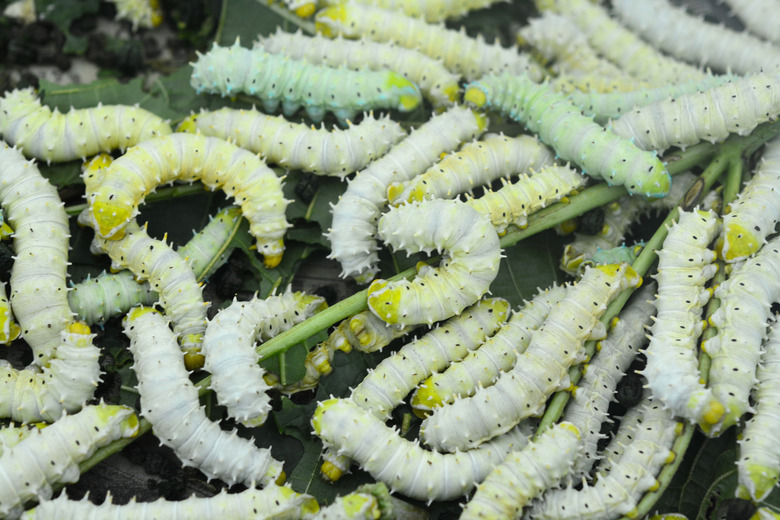Facts About Silkworms
Silkworms are tiny worms that spin their own silk cocoons. The scientific name for silkworms is Bombyx mori, which means "silkworm of the mulberry tree." They have been raised to produce fabric for thousands of years and can no longer be found in the wild.
Appearance
Appearance
Silkworms begin as wormlike larvae with the three distinct body parts of an insect. After spending time in a cocoon, the silkworm morphs into a scaly, four-winged moth.
Molting
Molting
After hatching from eggs, the worms molt four times before spinning their cocoons. The silk fiber comes from the cocoons.
Diet
Diet
Silkworms eat the leaves of the mulberry tree or can exist on an artificial diet. They also eat the leaves of the tree known as the Tree of Heaven.
Habitat
Habitat
Silkworms now depend on silk producers, laboratories and schoolchildren to propagate the species. In their domestication, the moths lost the ability to fly, so wild populations no longer exist.
Mating
Mating
Female moths release pheromones that are picked up by tiny hairs on male moth antennas. The small amounts of pheromones are detectable from long distances.
References
Cite This Article
MLA
Daniels, Stephanie. "Facts About Silkworms" sciencing.com, https://www.sciencing.com/silkworms-5455701/. 15 November 2019.
APA
Daniels, Stephanie. (2019, November 15). Facts About Silkworms. sciencing.com. Retrieved from https://www.sciencing.com/silkworms-5455701/
Chicago
Daniels, Stephanie. Facts About Silkworms last modified March 24, 2022. https://www.sciencing.com/silkworms-5455701/
